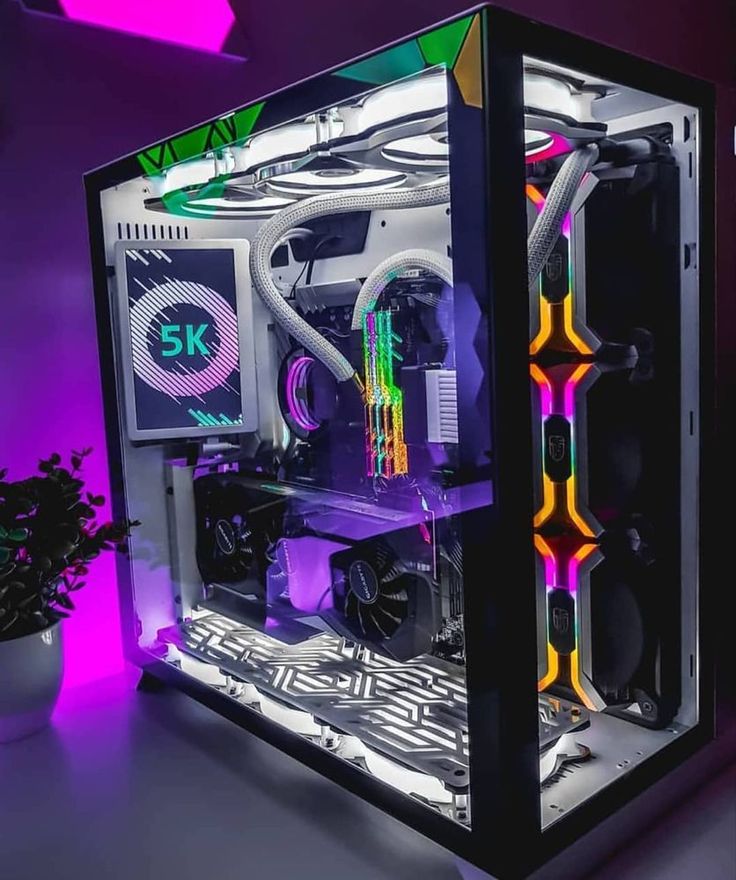Building your own gaming desktop can be an incredibly rewarding experience. Not only do you get to customize it to suit your gaming preferences, but you also learn a lot about how computers work in the process gaming desktop. Whether you’re a seasoned pro or a complete newbie, this guide will take you through the steps of building your dream gaming rig.

1. Define Your Goals
Before you dive into the hardware selection, take a moment to define your gaming goals. Are you looking to play the latest AAA titles at ultra settings? Or are you more interested in competitive gaming, where high frame rates are key? Knowing what you want will help guide your choices.
2. Budgeting
Set a budget for your build. High-end components can be pricey, but there are always great mid-range options. Keep in mind that you’ll need to account for not just the parts but also peripherals, such as a monitor, keyboard, and mouse.
3. Selecting Components
CPU (Processor)
The CPU is the heart of your gaming rig. Look for a multi-core processor from AMD or Intel. AMD’s Ryzen series offers excellent multi-threaded performance, while Intel’s Core i5 and i7 CPUs are great for gaming.
GPU (Graphics Card)
The GPU is arguably the most crucial component for a gaming desktop. Brands like NVIDIA and AMD dominate the market. If you’re aiming for 1440p or 4K gaming, invest in a high-end GPU. Consider the NVIDIA GeForce RTX or AMD Radeon RX series.
Motherboard
Choose a motherboard that fits your CPU socket type. Ensure it has the necessary features, such as enough PCIe slots for your GPU, USB ports, and support for the latest standards like PCIe 4.0.
RAM (Memory)
For gaming, 16GB of RAM is generally the sweet spot. If you’re into heavy multitasking or streaming, consider 32GB. Look for DDR4 memory with a speed of at least 3200 MHz for optimal performance.
Storage
Consider a combination of SSD and HDD. An SSD (Solid State Drive) will speed up load times significantly, while an HDD (Hard Disk Drive) offers larger storage for less money. Aim for at least a 500GB SSD for your operating system and favorite games.
Power Supply (PSU)
Don’t skimp on the power supply. A reliable PSU with an 80 Plus certification ensures efficiency and stability. Calculate your power needs based on your components to find an appropriate wattage.
Case
Choose a case that fits your components and offers good airflow. Look for cable management options and ease of access for future upgrades. Make sure it can accommodate your GPU and cooling solutions.
Cooling
Adequate cooling is essential for performance and longevity. Decide between air cooling and liquid cooling based on your needs and preferences. Brands like Noctua and Corsair offer great options for both.
4. Assemble Your Desktop
Now that you have all your components, it’s time to assemble your gaming desktop. Here’s a step-by-step process:
- Prepare Your Workspace: Find a clean, static-free environment.
- Install the CPU: Carefully place the CPU into the motherboard’s socket.
- Attach the Cooler: Follow the instructions for your cooling solution.
- Install RAM: Slot the RAM sticks into their respective slots.
- Place the Motherboard in the Case: Secure it with screws.
- Install the PSU: Position the power supply and connect it to the motherboard.
- Add Storage: Install SSDs and HDDs in their designated bays.
- Insert the GPU: Connect the graphics card to the motherboard.
- Cable Management: Tidy up cables for better airflow.
- Final Checks: Ensure everything is connected properly before closing up the case.
5. Install the Operating System
Once your build is complete, it’s time to install your operating system. Windows is the most popular choice for gaming, but Linux is also an option for those who prefer open-source solutions.
6. Install Drivers and Updates
After the OS installation, update your drivers, especially for your GPU. This ensures optimal performance and compatibility with the latest games.
7. Optimize Settings
Finally, tweak your system settings for the best gaming experience. Adjust in-game settings based on your hardware capabilities, and consider software tools that help manage performance, like MSI Afterburner or RivaTuner.
Conclusion
Building your dream gaming desktop is a journey that pays off in performance and satisfaction. With careful planning and attention to detail, you can create a rig that not only meets but exceeds your gaming expectations. So gather your components, follow these steps, and get ready to dive into immersive gaming adventures!
